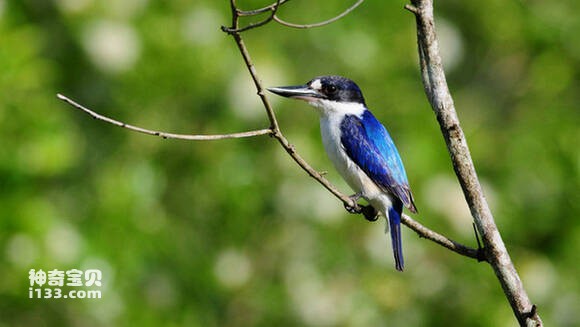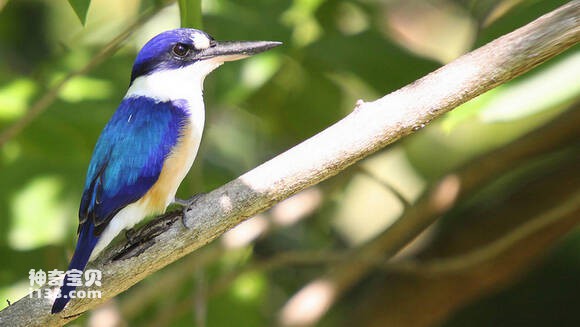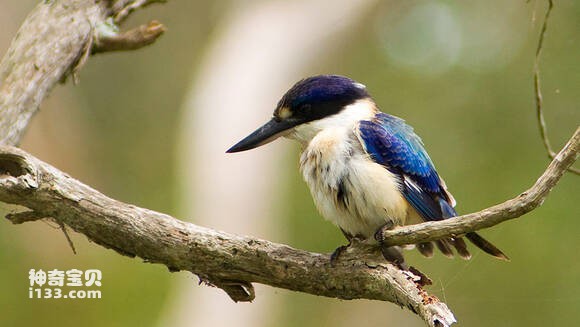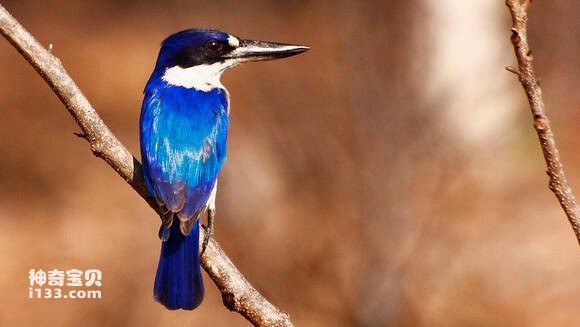Todirhamphus macleayii
IUCN
LCBasic Information
Scientific classification
- name:Todirhamphus macleayii
- Scientific Name:Todirhamphus macleayii,Forest Kingfisher
- Outline:Climbing birds
- Family:
Vital signs
- length:About 20 cm
- Weight:29-42g
- lifetime:No textual research information is available
Feature
Very noisy, very territorial
Distribution and Habitat
It is found in Australia, Indonesia, Papua New Guinea and Solomon Islands. In Australia, its distribution extends to north-eastern New South Wales, particularly in the eastern part of the Range, to the Cape York Peninsula and the northern region, from Melville Island, Darwin, Victoria River, and Groot Island. It also exists east of Astrolabe Bay in Papua New Guinea until the western Bismarck Islands.
It is usually found in wooded areas, forests and along river banks; In Australia, it occurs in nearby forest marshes, forest fringes of savannas, farmlands, grasslands, swamps and woodlands of creeks, wooded bays, and also in eucalyptus forests, mangroves. In New Guinea, its habitat reaches up to 1,600 meters.
Appearance
It is 20 cm long and weighs 29-42 grams. The male's head and wings are blue-purple. There is a large white spot on the base of the mouth. Black eye first, white back of neck. Turquoise blue on the upper body, cobalt blue on the tail. The tertiary and tail feathers have a bluish-purple tint, and the sides of the neck, chin, throat, chest, wings, underbelly, and tail are largely white. The inner side of the wings is white. Upper jaw dark brown. Iris dark brown, legs gray black. [1]
The difference between female and male birds is that the nape of the neck, hat and back (without white collar) are dark blue. The young birds differ from the adult males in that they are slightly darker in blue, and the shell and wings of their feathers are antelope yellow. The chest has dark stripes, the sides and abdomen are pale yellow, and the back is gray, blue, or black.
The mouth is thick and long like a chisel, the base is wider, the mouth peak is straight, the peak ridge is round, there is
Details
Todirhamphus macleayii, Forest Kingfisher, has three subspecies (Forest Kingfisher subspecies, Forest Kingfisher subspecies and Forest Kingfisher Cape York subspecies).

Forest jade migrates in some areas, returning to the same area every year. The New South Wales Forest kingfisher leaves in March-April each year and returns on 9-10. Their wintering areas are in the Taninbar Islands, Indonesia, and southern Papua New Guinea. The subspecies that live on New Britain, New Ireland and Elizabeth Island do not migrate and are resident birds.

Forest jade is generally alone or couples to hunt together. Like most forest kingfishers, they are completely carnivorous. Very noisy, very territorial. Because they are migratory birds, there are two migrations in summer and winter, at this time of year, the Lin Fei-fei couple will be very loyal to return to the same territory. This kingfisher loves to hunt best, hunting for an exposed tree branch or telephone pole. Once it finds a prey, it pecks at its legs and chest, sometimes swinging it around in its mouth or striking it vigorously until it is dead and then eats it.

The main food is invertebrates, such as crickets, spiders, scorpions, and snails. It also eats small vertebrates such as small fish, small snakes and lizards.

The spawning time varies depending on the region: October to December in New South Wales, August to December in Queensland, September to November in the Northern Territory, and January in New Guinea. Both sexes usually work together to dig nests in the hollow trunks of termites. Their nest resembles a short, slightly curved tunnel, with a dimension of about 23 cm deep. Females lay 3-6 eggs per litter.
Listed on the International Union for Conservation of Nature (IUCN) 2013 Red List of Threatened Species ver 3.1 - Low Risk (LC).
Protect wild animals and eliminate wild meat.
Maintaining ecological balance is everyone's responsibility!








